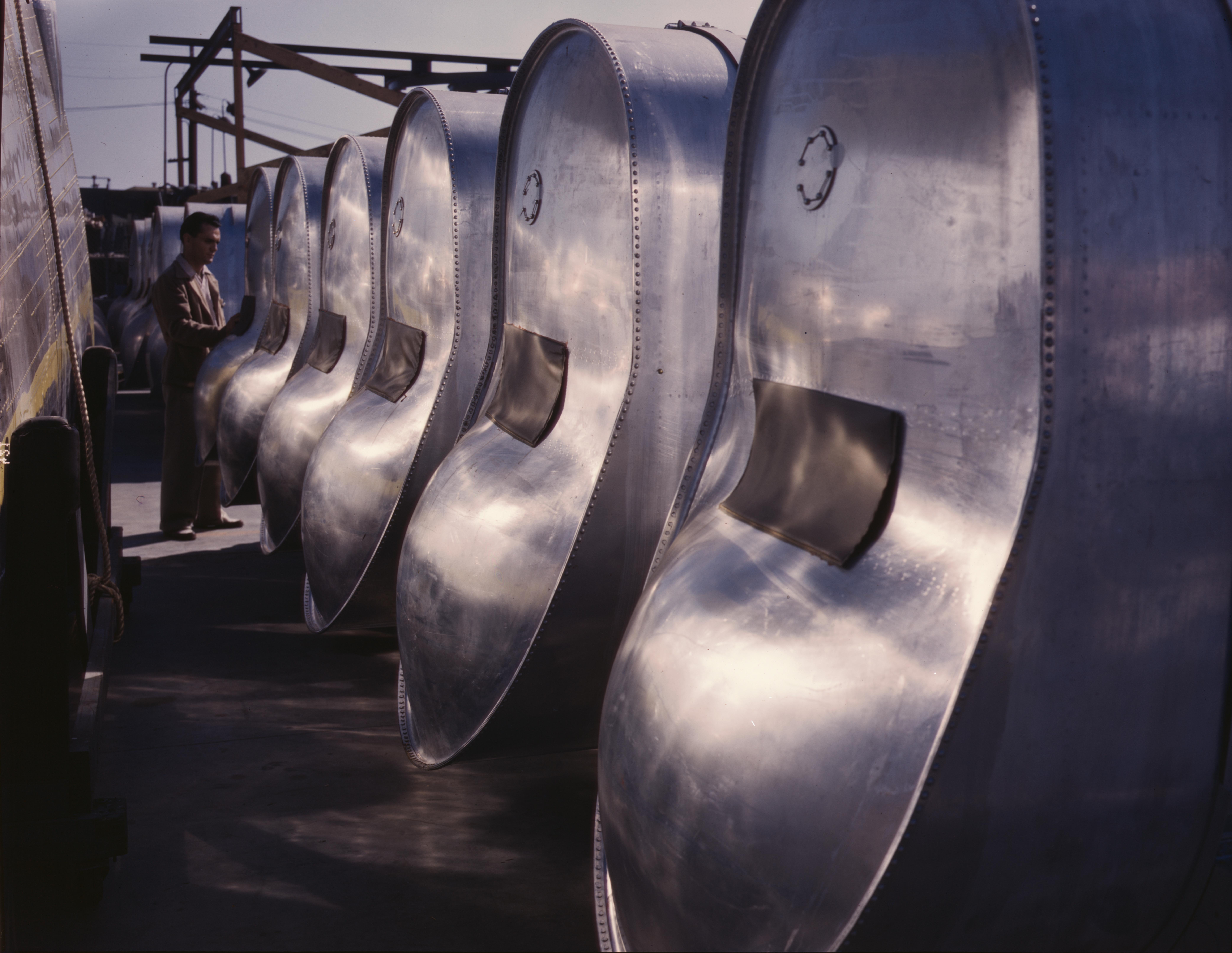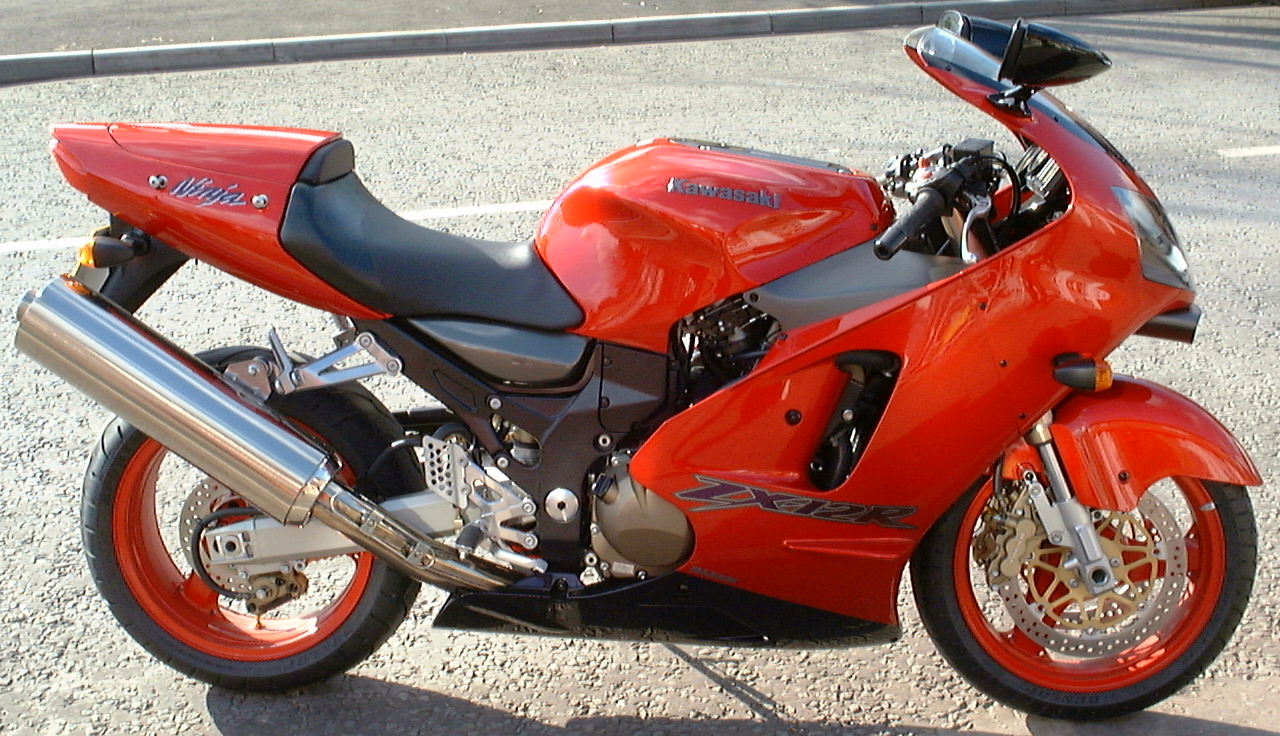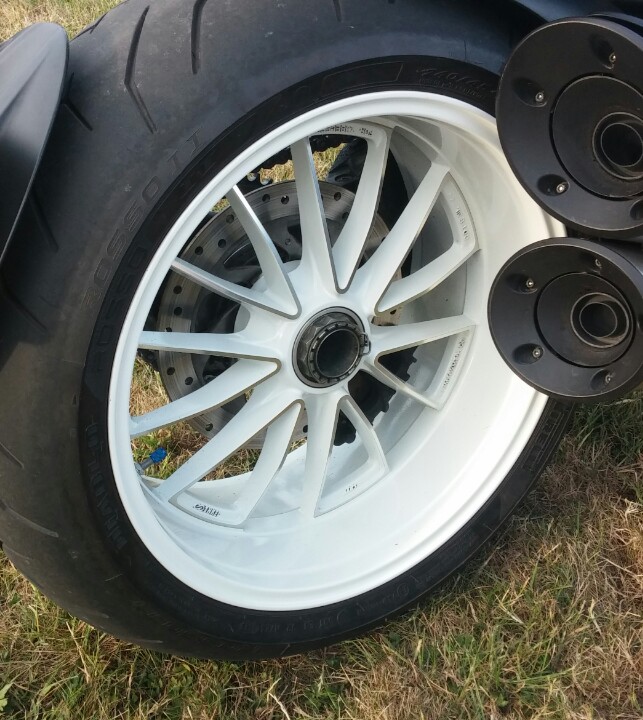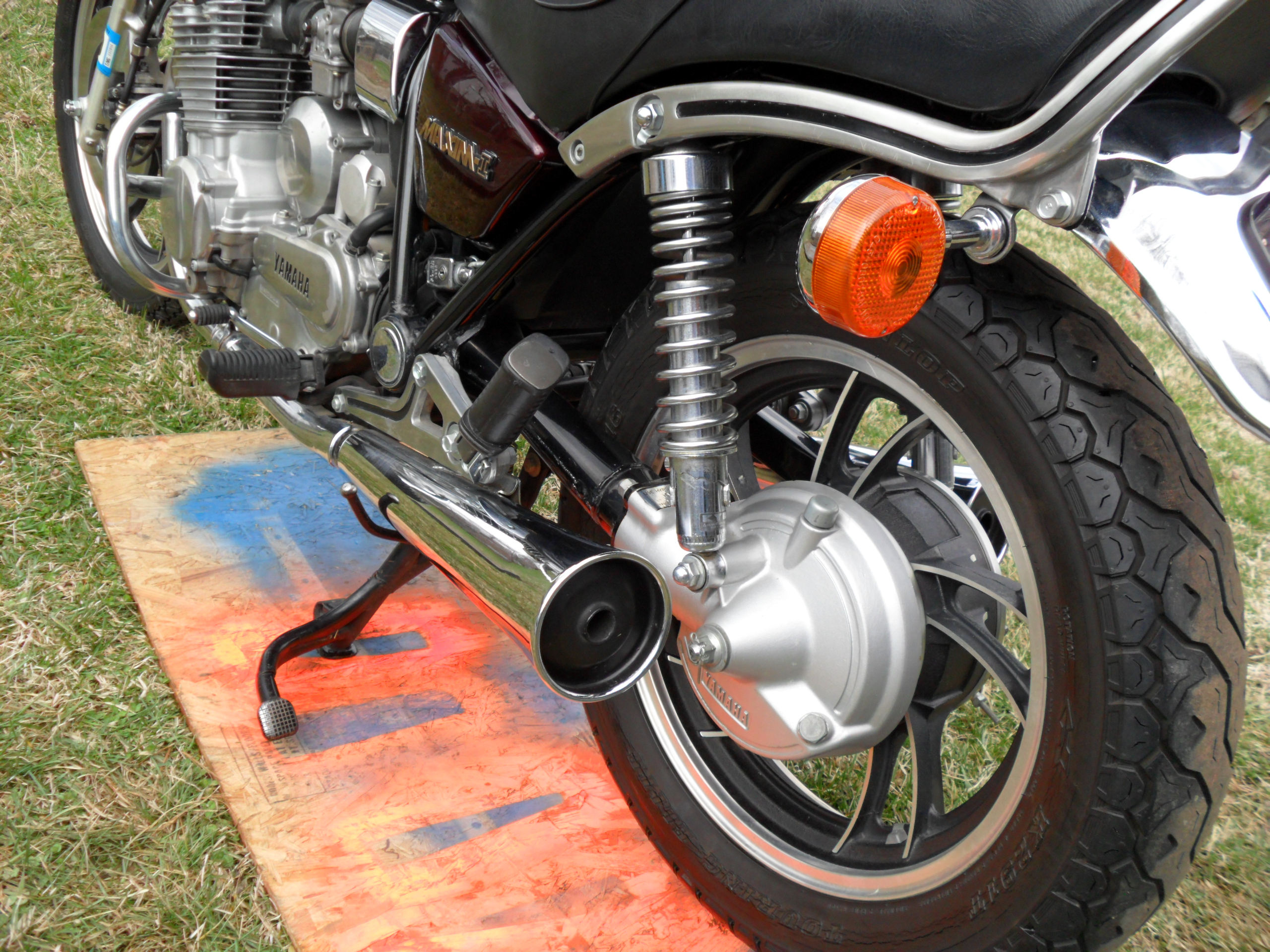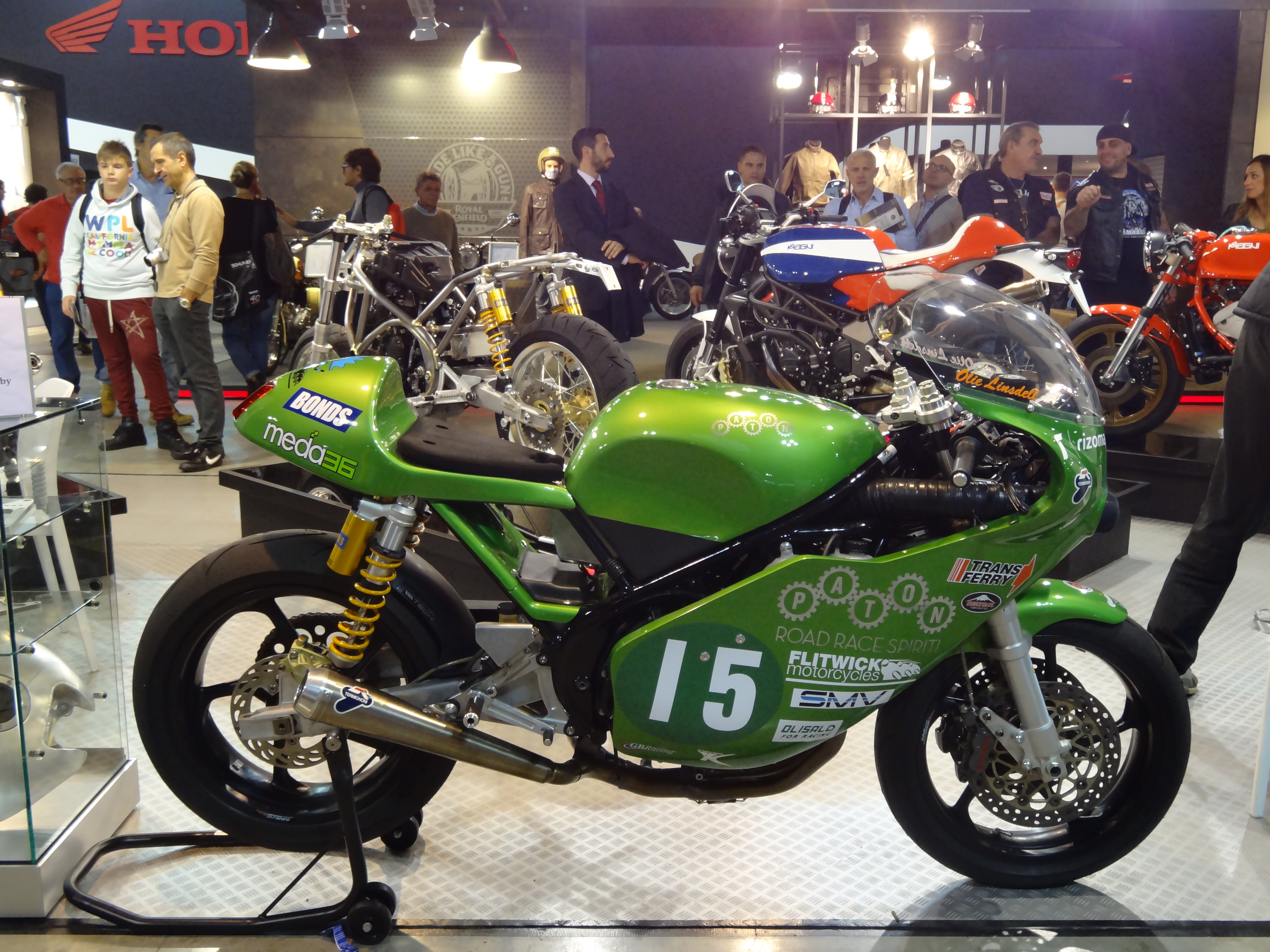|
MV F4
The MV Agusta F4 is an inline four-cylinder sport bike made by MV Agusta from 1999 until 2018. It was the motorcycle that launched the resurrection of the brand in 1998. The F4 was created by motorcycle designer Massimo Tamburini at CRC (Cagiva Research Center), following his work on the Ducati 916. The F4 has a single-sided swingarm, large diameter () front forks and traditional MV Agusta red and silver livery. The F4 engine is also one of the few production superbikes to have a hemi-spherical cylinder head chamber design with 4 valves per cylinder. Engine The F4 engine is a liquid cooled inline four cylinder four-stroke set across the frame with two overhead camshafts (DOHC), 16 'radial' valves, electronic multipoint fuel injection, and induction discharge electronic ignition having engine displacements of , , and . The engine was derived from the 1990–1992 Ferrari Formula One engine. Early in the design process Ferrari engineers assisted in the development of the engin ... [...More Info...] [...Related Items...] OR: [Wikipedia] [Google] [Baidu] |
MV Agusta
MV Agusta (, full name: MV AGUSTA Motor S.p.A., original name: Meccanica Verghera Agusta or MV) is a motorcycle manufacturer founded by Count Domenico Agusta on 19 January 1945 as one of the branches of the Agusta aircraft company near Milan in Cascina Costa, Italy. The abbreviation MV stands for ''Meccanica'' (mechanics) ''Verghera'', the hamlet where the first MVs were made. The modern headquarters and main production facilities are located in Varese, Italy on the shore of Lake Varese. History 1943–1945: From idea to mass production It all began in the early years of the 20th century, when Count Giovanni Agusta left Sicily for northern Italy, where he built his first aircraft, the AG.1, four years after the Wright brothers had made history in the US. The First World War, which demonstrated the prospects of aviation, prompted the count to act decisively – and in 1923, in the town of Samarate, he founded the Costruzioni Aeronautiche Giovanni Agusta S.A. (usually shorte ... [...More Info...] [...Related Items...] OR: [Wikipedia] [Google] [Baidu] |
Ferrari
Ferrari S.p.A. (; ) is an Italian luxury sports car manufacturer based in Maranello, Italy. Founded by Enzo Ferrari (1898–1988) in 1939 from the Alfa Romeo racing division as ''Auto Avio Costruzioni'', the company built its first car in 1940, and produced its first Ferrari-badged car in 1947. Fiat S.p.A. acquired 50% of Ferrari in 1969 and expanded its stake to 90% in 1988. In October 2014, Fiat Chrysler Automobiles (FCA) announced its intentions to separate Ferrari S.p.A. from FCA; as of the announcement FCA owned 90% of Ferrari. The separation began in October 2015 with a restructuring that established Ferrari N.V. (a company incorporated in the Netherlands) as the new holding company of the Ferrari S.p.A. group, and the subsequent sale by FCA of 10% of the shares in an IPO and concurrent listing of common shares on the New York Stock Exchange. Through the remaining steps of the separation, FCA's interest in Ferrari's business was distributed to shareholders of FCA, ... [...More Info...] [...Related Items...] OR: [Wikipedia] [Google] [Baidu] |
Carbon Fiber Reinforced Polymer
Carbon fiber-reinforced polymers (American English), carbon-fibre-reinforced polymers (Commonwealth English), carbon-fiber-reinforced plastics, carbon-fiber reinforced-thermoplastic (CFRP, CRP, CFRTP), also known as carbon fiber, carbon composite, or just carbon, are extremely strong and light fiber-reinforced plastics that contain carbon fibers. CFRPs can be expensive to produce, but are commonly used wherever high strength-to-weight ratio and stiffness (rigidity) are required, such as aerospace, superstructures of ships, automotive, civil engineering, sports equipment, and an increasing number of consumer and technical applications. The binding polymer is often a thermoset resin such as epoxy, but other thermoset or thermoplastic polymers, such as polyester, vinyl ester, or nylon, are sometimes used. The properties of the final CFRP product can be affected by the type of additives introduced to the binding matrix (resin). The most common additive is silica, but other addit ... [...More Info...] [...Related Items...] OR: [Wikipedia] [Google] [Baidu] |
Air Box
An airbox is an empty chamber on the inlet of most combustion engines. It collects air from outside and feeds it to the intake hoses of each cylinder. Older engines drew air directly from the surroundings into each individual carburetor. Modern engines instead draw air into an airbox, which is connected by individual hoses to each carburetor or directly to the intake ports in fuel-injected engines, thus avoiding an extra intake manifold. The airbox allows the use of one air filter instead of multiples, reducing complexity. Developments arising from concerns about engine emissions during the late 1970s allow the airbox to collect pump gases from the crankcase and the tank air vent and re-feed them to the engine. Developments Since the 1990s, engine designers also sought to exploit the properties of oscillating gas to improve performance. Many high-performance motorcycles have the airbox fed from funnels in the front of the bike, where increased pressure forces more air into ... [...More Info...] [...Related Items...] OR: [Wikipedia] [Google] [Baidu] |
Fuel Tank
A fuel tank (also called a petrol tank or gas tank) is a safe container for flammable fluids. Though any storage tank for fuel may be so called, the term is typically applied to part of an engine system in which the fuel is stored and propelled (fuel pump) or released (pressurized gas) into an engine. Fuel tanks range in size and complexity from the small plastic tank of a butane lighter to the multi-chambered cryogenic Space Shuttle external tank. Uses Typically, a fuel tank must allow or provide the following: * Storage of fuel: the system must contain a given quantity of fuel and must avoid leakage and limit evaporative emissions. * Filling: the fuel tank must be filled in a secure way, without sparks. * Provide a method for determining level of fuel in tank, gauging (the remaining quantity of fuel in the tank must be measured or evaluated). * Venting (if over-pressure is not allowed, the fuel vapors must be managed through valves). * Feeding of the engine (throug ... [...More Info...] [...Related Items...] OR: [Wikipedia] [Google] [Baidu] |
Mudguard
A mudflap or mud guard is used in combination with the vehicle fender to protect the vehicle, passengers, other vehicles, and pedestrians from mud and other flying debris thrown into the air by the rotating tire. A mudflap is typically made from a flexible material such as rubber that is not easily damaged by contact with flying debris, the tire, or the road surface. On bicycles the mudflap is called a spoiler. It helps keep the rider(s) cleaner. Mudflaps can be large rectangular sheets suspended behind the tires, or may be small molded lips below the rear of the vehicle's wheel wells. Mudflaps can be aerodynamically engineered, utilizing shaping, louvers or vents to improve airflow and lower drag. While some flaps are plain, in the colour of rubber, many contain company logos, other art or sometimes advertisements. Another is the mudflap girl, a woman's silhouette. In the United States, there are mudflap regulations that vary from state to state. Aerodynamic Aerodynam ... [...More Info...] [...Related Items...] OR: [Wikipedia] [Google] [Baidu] |
Motorcycle Fairing
A motorcycle fairing is a shell placed over the frame of a motorcycle, especially racing motorcycles and sport bikes, to deflect wind and reduce air drag. The secondary functions are the protection of the rider from airborne hazards and wind-induced hypothermia and of the engine components in the case of an accident. A motorcycle windshield will usually be integrated into the design of the fairing.Tony Foale, ''Motorcycle Handling and Chassis Design'', , Chapter 5: "Aerodynamics" The major benefit of a fairing on sport touring and touring motorcycles is a reduction in aerodynamic drag, which allows for reduced fuel consumption and permits higher speeds at lower engine rpm, which in turn increases engine life. A motorcycle may have a front fairing, a rear fairing, a belly fairing, or any combination of these. Alternatively, a single fairing may partially or fully enclose the entire motorcycle, and may even enclose the rider. History The importance of streamlining was known ver ... [...More Info...] [...Related Items...] OR: [Wikipedia] [Google] [Baidu] |
Magnesium
Magnesium is a chemical element with the symbol Mg and atomic number 12. It is a shiny gray metal having a low density, low melting point and high chemical reactivity. Like the other alkaline earth metals (group 2 of the periodic table) it occurs naturally only in combination with other elements and it almost always has an oxidation state of +2. It reacts readily with air to form a thin passivation coating of magnesium oxide that inhibits further corrosion of the metal. The free metal burns with a brilliant-white light. The metal is obtained mainly by electrolysis of magnesium salts obtained from brine. It is less dense than aluminium and is used primarily as a component in strong and lightweight alloys that contain aluminium. In the cosmos, magnesium is produced in large, aging stars by the sequential addition of three helium nuclei to a carbon nucleus. When such stars explode as supernovas, much of the magnesium is expelled into the interstellar medium where it ma ... [...More Info...] [...Related Items...] OR: [Wikipedia] [Google] [Baidu] |
Motorcycle Wheel
Motorcycle wheels are made to cope with radial and axial forces. They also provide a way of mounting other critical components such as the brakes, final drive and suspension. Wheels, and anything directly connected to them, are considered to be unsprung mass. Traditionally motorcycles used wire-spoked wheels with inner tubes and pneumatic tyres. Although cast wheels were first used on a motorcycle in 1927, it would not be until the 1970s that mainstream manufacturers would start to introduce cast wheels on their roadgoing motorcycles. Spoked wheels are usually made using steel spokes with steel or aluminium rims. Cast wheels are predominantly made from an aluminium-alloy, but can also be made from more-exotic materials, such as magnesium content alloy or carbon fibre. History The first commercial motorcycles were built like bicycles, with wire wheels as bicycles had traditionally been fitted with. The Steffey motorcycle in 1902, essentially a bicycle with a two-stroke engine atta ... [...More Info...] [...Related Items...] OR: [Wikipedia] [Google] [Baidu] |
Motorcycle Frame
A motorcycle frame is a motorcycle's core structure. It supports the engine, provides a location for the steering and rear suspension, and supports the rider and any passenger or luggage. Also attached to the frame are the fuel tank and battery. At the front of the frame is found the steering head tube that holds the pivoting front fork, while at the rear there is a pivot point for the swingarm suspension motion. Some motorcycles include the engine as a load-bearing stressed member; while some other bikes do not use a single frame, but instead have a front and a rear subframe attached to the engine. Materials In the early days, motorcycles were little more than motorised bicycles, and consequently frames were tubular steel. While the use of steel tubing is still common, in modern times other materials, such as titanium, aluminium, magnesium, and carbon-fibre, along with composites of these materials, are now used. As different motorcycles have varying design parameters (such as ... [...More Info...] [...Related Items...] OR: [Wikipedia] [Google] [Baidu] |
Swingarm
A swingarm, or "swinging arm" (UK), originally known as a swing fork or pivoted fork, is a single or double sided mechanical device which attaches the rear wheel of a motorcycle to its body, allowing it to pivot vertically. The main component of the rear suspension of most modern motorbikes and ATVs, it holds the rear axle firmly, while pivoting to absorb bumps and suspension loads induced by the rider, acceleration, and braking. Originally motorcycles had no rear suspension, as their frames were little more than stronger versions of the classic diamond frame of a bicycle. Many types of suspension were tried, including Indian's leaf spring suspended swingarm, and Matchless's cantilevered coiled-spring swingarm. Immediately before and after World War II, the plunger suspension, in which the axle moved up and down two vertical posts, became commonplace. In the latter, the movement in each direction was against coiled springs. Some manufacturers, such as Greeves, used swingarm d ... [...More Info...] [...Related Items...] OR: [Wikipedia] [Google] [Baidu] |
EICMA
EICMA (''Esposizione Internazionale Ciclo Motociclo e Accessori''), or the Milan Motorcycle Shows is an annual trade show in Milan, Italy featuring motorcycles A motorcycle (motorbike, bike, or trike (if three-wheeled)) is a two or three-wheeled motor vehicle steered by a handlebar. Motorcycle design varies greatly to suit a range of different purposes: long-distance travel, commuting, cruising .... The 2018 show drew over half a million visitors and more than 1,200 exhibiting brands. The show is frequently used by manufacturers to debut new models. Organised by EICMA, editions take place every year in Milan, Italy and last for six days in total. Fiera Milano Rho admits trade visitors for the first two days and then is open for the general public on the latter four days. Opening hours for trade visitors are from 08:30 on the first day and 09:00 on the second until 18:30 for both days. For the general public, opening hours start from 09:30 for all days until 18:30. The o ... [...More Info...] [...Related Items...] OR: [Wikipedia] [Google] [Baidu] |




